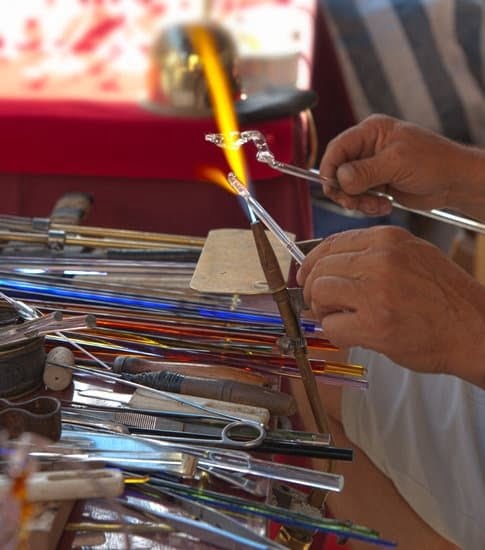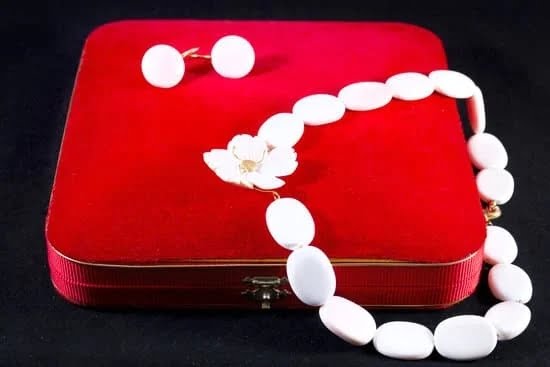Are you wondering, “will fine silver plated jewelry tarnish?” Silver plated jewelry is a popular choice for its affordability and versatility. In this article, we will explore the world of fine silver plated jewelry, understanding what silver plating is and how it works, and the factors that contribute to tarnishing. We will also discuss the effects of environmental factors on silver jewelry and provide tips on properly caring for your silver plated pieces to prevent tarnishing.
Fine silver plated jewelry offers the look of real sterling silver at a fraction of the cost. Silver plating involves coating a base metal with a thin layer of silver to give it the appearance of solid silver.
However, despite its beauty and durability, silver plated jewelry is prone to tarnishing over time, which brings us to the question: will fine silver plated jewelry tarnish? To understand this better, let’s delve into how silver plating works and what causes tarnishing in the first place.
Tarnishing occurs when the outer layer of the silver plating reacts with elements in the environment such as air, moisture, and chemicals. Factors like humidity, exposure to sulfur-containing substances, and even certain skincare products can accelerate tarnishing. Understanding these factors is crucial in learning how to care for and maintain your fine silver plated jewelry to keep it looking its best.
What Is Silver Plating and How It Works
Silver plating is a process in which a thin layer of silver is deposited onto the surface of another metal, such as brass or copper, to create silver plated jewelry. This process is commonly used to enhance the appearance of jewelry and make it more affordable compared to solid silver pieces.
The silver plating process involves the use of electricity and a chemical solution to bond the layer of silver onto the base metal. Once the plating process is complete, the jewelry piece is polished to achieve a smooth and shiny finish.
Understanding how silver plating works can help us address the question: will fine silver plated jewelry tarnish? Although pure silver itself does not tarnish easily, fine silver plated jewelry may tarnish over time due to exposure to air, moisture, and other environmental factors. The thin layer of silver on plated jewelry makes it more susceptible to tarnishing compared to solid sterling silver pieces.
To prevent tarnishing of fine silver plated jewelry, it is important to understand how environmental factors can impact its appearance. Factors such as humidity, sweat, perfumes, lotions, and even certain types of fabric can contribute to tarnishing. By properly caring for your silver plated jewelry and taking preventative measures, you can extend its lifespan and maintain its lustrous shine.
- Store your fine silver plated jewelry in an airtight container or resealable plastic bag when not in use
- Avoid wearing your jewelry while swimming or engaging in activities that expose it to harsh chemicals
- Regularly clean your silver plated jewelry with a soft cloth to remove any dirt or residue that may accelerate tarnishing
By following these proper care techniques and understanding the factors that contribute to tarnishing, you can keep your fine silver plated jewelry looking beautiful for years to come.
Understanding Tarnishing and the Factors That Contribute to It
Silver plated jewelry is a popular and affordable option for those who desire the look of real silver without the high cost. However, many wonder, “Will fine silver plated jewelry tarnish?” The answer is yes, silver plated jewelry can tarnish over time. Understanding how tarnishing occurs and the factors that contribute to it can help in properly caring for your silver plated pieces to prevent tarnishing.
Tarnishing happens when the outer layer of the metal reacts with sulfur compounds in the air, causing a discoloration on the surface of the jewelry. Factors that contribute to tarnishing include exposure to air and moisture, contact with chemicals such as lotions and perfumes, and even the pH balance of individual’s skin.
While tarnishing is inevitable with all types of metals including sterling silver, brass and copper-based alloys that are silver-plated are particularly prone to tarnishing due to their composition.
To prevent tarnishing of fine silver-plated jewelry, proper care and maintenance are essential. Storing your jewelry in airtight containers or ziplock bags when not in use can minimize exposure to air and moisture. It is also important to avoid contact with harsh chemicals such as household cleaners and avoid wearing your jewelry when using lotions or perfumes.
Properly caring for fine silver plated jewelry will ensure its long-lasting beauty and shine. Understanding how tarnishing occurs and taking preventive measures can help you enjoy your favorite pieces for years to come.
| Factors Contributing to Tarnishing | Preventive Measures |
|---|---|
| Exposure to air and moisture | Store in airtight containers or ziplock bags |
| Contact with harsh chemicals | Avoid exposure to household cleaners; take off before using lotions or perfumes |
Effects of Environmental Factors on Silver Jewelry
Silver plated jewelry is a popular choice for those seeking the beauty and elegance of silver at a more affordable price. However, it is important to understand that silver plated jewelry can tarnish over time, especially when exposed to certain environmental factors.
Environmental factors such as humidity, air pollution, and chemicals can all contribute to the tarnishing of fine silver plated jewelry. When silver comes into contact with sulfur-containing substances in the air or on the skin, it creates silver sulfide, which causes the jewelry to darken and lose its shine.
To prevent tarnishing of fine silver plated jewelry, it is important to take proper care of your pieces and be mindful of their exposure to these environmental factors. Here are some tips for protecting your silver plated jewelry from tarnishing:
- Avoid exposing your jewelry to harsh chemicals such as perfumes, lotions, and hairsprays
- Store your jewelry in a cool, dry place away from direct sunlight
- Consider using anti-tarnish cloths or bags to protect your jewelry when not in use
By understanding the effects of environmental factors on silver plated jewelry and taking proactive measures to protect it, you can maintain the beauty and shine of your pieces for years to come.
How to Properly Care for Fine Silver Plated Jewelry to Prevent Tarnishing
Fine silver plated jewelry is a beautiful and affordable option for those who love the look of silver but don’t want to pay the high price tag that comes with solid sterling silver. However, one common concern among consumers is whether fine silver plated jewelry will tarnish over time.
The simple answer is yes, it will tarnish. But there are steps you can take to properly care for your fine silver plated jewelry to prevent tarnishing and keep it looking shiny and new.
To understand how to care for fine silver plated jewelry, it’s important to first understand what silver plating is and how it works. Silver plating involves depositing a thin layer of silver onto a base metal through a process called electroplating. This creates the appearance of solid silver at a fraction of the cost. However, because the layer of silver is thin, it is more prone to tarnishing than solid sterling silver.
One of the main factors that contribute to tarnishing of fine silver plated jewelry is exposure to environmental elements such as moisture, air, and chemicals. When exposed to these elements, the thin layer of silver can oxidize and develop a dull or discolored appearance.
If not properly cared for, this can lead to tarnishing over time. Therefore, it’s important to take certain precautions and follow specific care instructions to prevent tarnishing and keep your fine silver plated jewelry looking its best.
| Factors Contributing to Tarnishing | Preventive Care Steps |
|---|---|
| Exposure to moisture, air, and chemicals | Avoid exposing jewelry to water or chemicals such as lotions and perfumes |
| Storage in humid environments | Store jewelry in an airtight container or bag when not in use |
| Acidity levels in skin | Clean jewelry regularly with a soft cloth or mild cleaning solution |
Debunking Myths About Tarnishing of Silver Jewelry
There are many myths and misconceptions surrounding the tarnishing of silver jewelry. In this section, we will debunk some of these myths and provide clarity on how to properly care for fine silver plated jewelry to prevent tarnishing.
Myth 1: Pure Silver Does Not Tarnish
One common myth is that pure silver does not tarnish, but this is not entirely true. While pure silver is less prone to tarnishing compared to other metals, it can still become tarnished over time when exposed to certain environmental factors. This is why even fine silver plated jewelry can tarnish if not properly cared for.
Myth 2: Tarnishing Means the Jewelry Is Low Quality
Another misconception is that tarnishing indicates low-quality silver jewelry. In reality, even high-quality silver plated jewelry can tarnish if it is not maintained properly. Tarnishing is a natural process that occurs due to the interaction of silver with elements in the environment, and it does not necessarily reflect the quality of the jewelry.
Myth 3: Keeping Silver Jewelry in Airtight Containers Prevents Tarnishing
Some people believe that storing silver jewelry in airtight containers will prevent tarnishing. However, while proper storage can help minimize exposure to air and moisture, it is not a foolproof method for preventing tarnishing. It is essential to follow proper care techniques in addition to storage methods to preserve the shine of fine silver plated jewelry.
By debunking these myths about the tarnishing of silver jewelry, we hope to provide clarity on how best to care for and maintain the beauty of fine silver plated jewelry. Understanding the facts about tarnishing can help individuals take proactive steps in preventing their beloved pieces from losing their luster over time.
Exploring Alternative Solutions to Prevent Tarnishing
Fine silver plated jewelry is a popular choice for those looking for the beauty of silver without the high cost of solid silver jewelry. However, one common concern among consumers is if fine silver plated jewelry will tarnish over time. While this type of jewelry does have a layer of real silver, it is important to understand that fine silver plated jewelry can still tarnish, especially if not properly cared for.
Use Anti-Tarnish Products
One alternative solution to prevent tarnishing of fine silver plated jewelry is to use anti-tarnish products. These products often come in the form of strips or papers that are placed alongside the jewelry when stored. They work by absorbing any sulfur compounds in the air that may cause tarnishing.
Regular Maintenance and Cleaning
Another way to prevent tarnishing is through regular maintenance and cleaning of your fine silver plated jewelry. This can be done using a soft cloth or a gentle polishing compound specifically designed for silver jewelry. By regularly removing any built-up dirt and oils from the surface, you can help prevent tarnishing from occurring.
Replating the Jewelry
For those who want a more permanent solution to preventing tarnishing, replating the jewelry with a fresh layer of silver can be an effective option. This process involves stripping off the old plating and applying a new layer, essentially restoring the original shine and luster of the piece. However, this solution may come with an added cost and should be done by a professional jeweler to ensure quality results.
Conclusion
In conclusion, fine silver plated jewelry has the potential to tarnish over time due to various environmental factors and the natural properties of silver. However, with proper care and maintenance, it is possible to maintain the beauty and shine of your silver plated jewelry for years to come. Understanding the process of silver plating and how it interacts with its environment can help you take the necessary precautions to prevent tarnishing.
It is important to note that fine silver plated jewelry may tarnish over time, but there are steps you can take to slow down this process. Storing your jewelry in airtight containers, using anti-tarnish strips or cloths, and avoiding exposure to harsh chemicals can all help preserve the luster of your pieces. Regular cleaning with mild soap and water, followed by gentle drying with a soft cloth, will also help remove any buildup that could contribute to tarnishing.
In addition, debunking common myths about tarnishing and exploring alternative solutions such as protective coatings or plating techniques can provide further insight into the best ways to care for your silver plated jewelry. By understanding how silver plating works and taking proactive measures to protect your pieces, you can ensure that they remain radiant and beautiful for years to come.
Frequently Asked Questions
How Long Does Silver-Plated Jewellery Last?
Silver-plated jewelry may last for a few years with proper care and maintenance. However, the silver layer can wear off over time, especially with regular use. Factors such as the thickness of the plating and how often the jewelry is worn can affect its longevity.
Does Fine Silver-Plated Tarnish?
Fine silver-plated jewelry can tarnish over time due to exposure to air, moisture, and certain chemicals. Tarnishing occurs when the outer layer of silver oxidizes, resulting in a dull or discolored appearance. Proper cleaning and storage can help prevent tarnishing and prolong the shine of the jewelry.
Can I Shower With Fine Silver-Plated Jewelry?
It is not recommended to shower with fine silver-plated jewelry. Exposure to soaps, shampoos, and excessive moisture can accelerate tarnishing and damage the plating. It’s best to remove silver-plated jewelry before showering or swimming to maintain its luster and appearance.

Welcome to my jewelry blog! My name is Sarah and I am the owner of this blog.
I love making jewelry and sharing my creations with others.
So whether you’re someone who loves wearing jewelry yourself or simply enjoys learning about it, be sure to check out my blog for insightful posts on everything related to this exciting topic!





